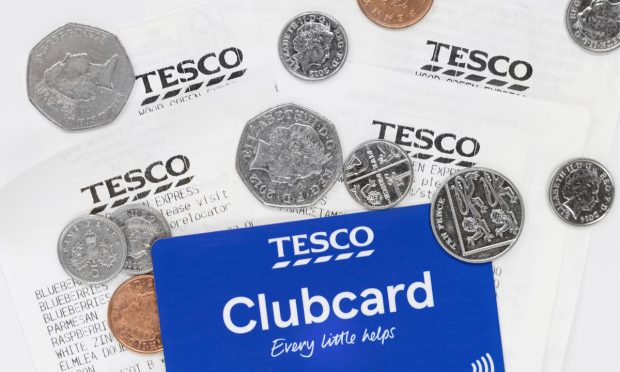How Loyalty Programs Can Help UK Shoppers Fully Embrace Mobile-Assisted Retail Experiences

A recent PYMNTS report looking into the digital shopping habits of consumers in six countries — Australia, Brazil, Mexico, the United Arab Emirates (UAE), the U.K. and the U.S. — found that U.K. consumers are 16% less likely than average to use their smartphones at any time for any reason during their shopping journeys, whether online, offline or a mix of both.
Read the report: 2022 Global Digital Shopping Playbook: U.K. Edition
When it comes to in-store shopping, Brits were found to be the least likely to use their phones to compare prices, find product information, read product reviews, locate products in-store, confirm if something is in stock or look up product ratings.
In one category of smartphone-assisted in-store shopping, however, U.K. consumers buck the trend. When asked whether they use mobile devices to build up loyalty rewards, 9.2% of British respondents answered yes, placing the country firmly in the middle of the table.
This finding is in line with previous PYMNTS research, which found that U.K. shoppers are keen users of loyalty schemes, especially in grocery stores. Sixty-three percent reported using at least one grocer’s loyalty program, and 44% said they spend more at supermarkets that offer one.
Read more: What U.K. Consumers Expect From Their Grocery Shopping Experiences
Read together, the findings of the two reports suggest that loyalty programs present an opportunity in the U.K.’s retail ecosystem that could encourage shoppers to pick up their phones more often.
25 Years of the Tesco Clubcard
One of the country’s largest supermarket chains, Tesco, offers an example of how loyalty schemes can boost smartphone-assisted in-store retail.
Tesco was the first large supermarket in the U.K. to offer a loyalty card scheme when it introduced the Tesco Clubcard in 1995. Unlike previous stamp-based loyalty schemes, Clubcards allowed Tesco to collect data about what people were buying, giving the retailer greater insight into its customers’ purchasing habits.
While Tesco was something of a pioneer in the field of supermarket data analytics, these days the concept is more associated with digital technologies than with the comparatively low-tech magnetic strip-based Clubcards of the ’90s.
It’s the reason why since 2010, Clubcard functionality has been available to shoppers via a mobile app.
While the first Clubcard apps offered just a single feature — the ability to identify each Clubcard account at checkout using a mobile device in place of a card or fob — the range of features has since expanded. Now, the Tesco Clubcard app can be used to view current offers, access rewards and apply discounts.
For Tesco, the Clubcard app has reached the point where it offers some clear advantages over a physical loyalty card.
What’s more, since 2020, the advantages of being a Clubcard holder, through the app or otherwise, has significantly increased. As well as being able to collect loyalty points that can be exchanged for rewards, Tesco now operates a two-tiered pricing regime, which gives Clubcard users discounts of up to 50% off hundreds of items.
Related: For Restaurant Patrons, Loyalty Rewards and Subscription Programs Go Hand in Hand
Having aggressively promoted its “Clubcard Prices” scheme last year, according to a Reuters report, the Clubcard app picked up 1.9 million users between October and December 2021. That means that out of the over 20 million Tesco loyalty scheme members, 8.5 million of them now access it through the app.
While Tesco makes a strong case for mobile-first loyalty schemes, shoppers and merchants still have a long way to go in the digital transformation of retail in the U.K. Despite the popularity of the Clubcard app, the above figures suggest that over half of Tesco shoppers still use a physical loyalty card, despite the advantages of the mobile equivalent.
Where Next for Loyalty Apps?
Besides Tesco, other loyalty schemes in the U.K. are also emphasizing smartphone-assisted in-store shopping. The country’s second-most downloaded loyalty app, Nectar, launched My Nectar Prices last year, which provides shoppers with personalized offers based on their purchase history.
Building on strategic business partnerships, Nectar — the loyalty scheme of Tesco rival Sainsbury’s — also allows customers to collect points from a range of other online and physical retailers. This means it generates user data across multiple brands and combines a dozen or more loyalty programs into a single offering.
With all those brands housing their loyalty programs under a single roof, the Nectar app has the potential to become a loyalty super app.
See also: The Super App Shift: How Consumers Want To Save, Shop And Spend In The Connected Economy
And as customers increasingly demand more convenient, frictionless user experiences, an app that combines loyalty schemes from multiple retailers and integrates with popular mobile wallets could be just the thing that nudges U.K. shoppers to further embrace their smartphones.
For all PYMNTS EMEA coverage, subscribe to the daily EMEA Newsletter.
